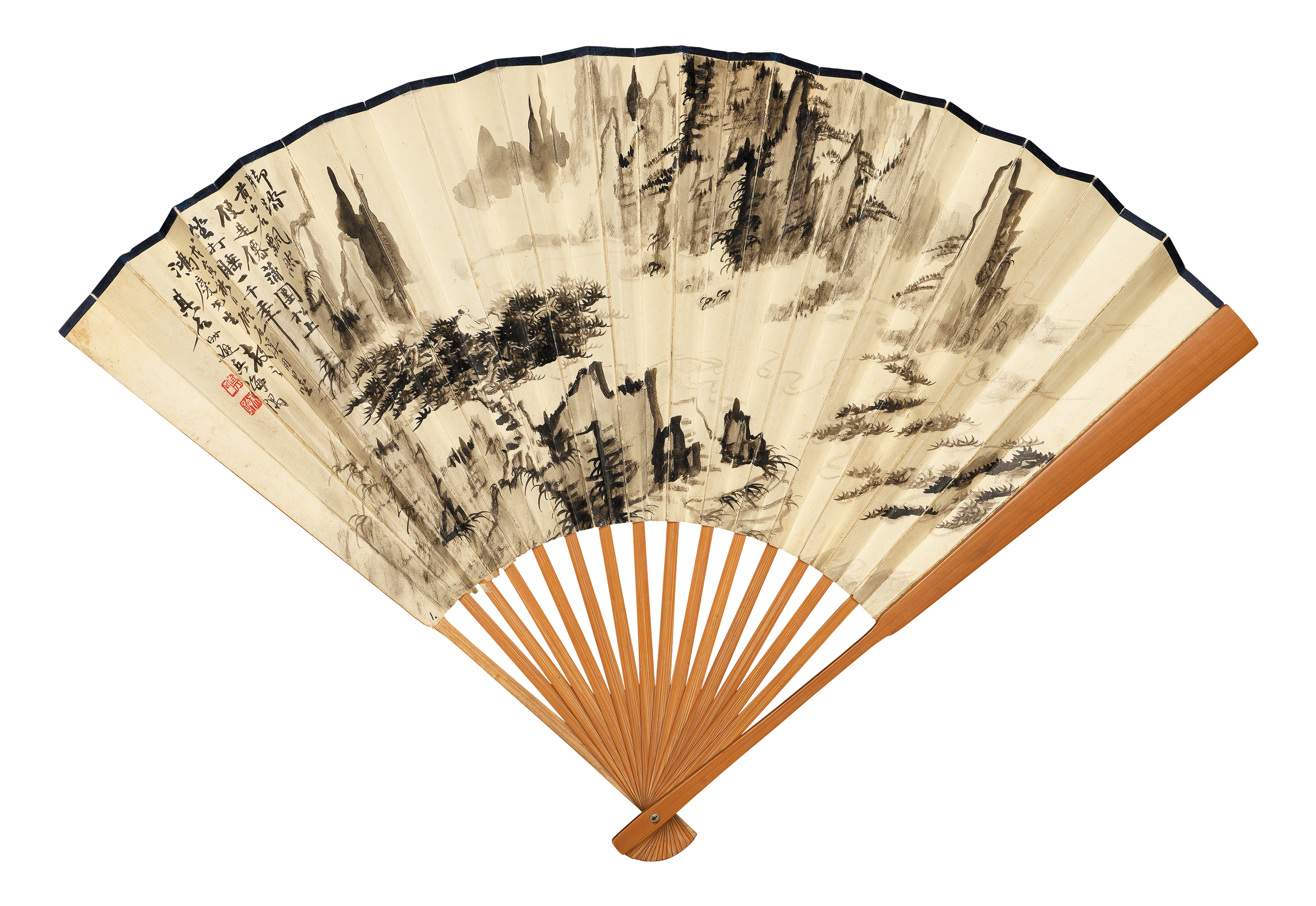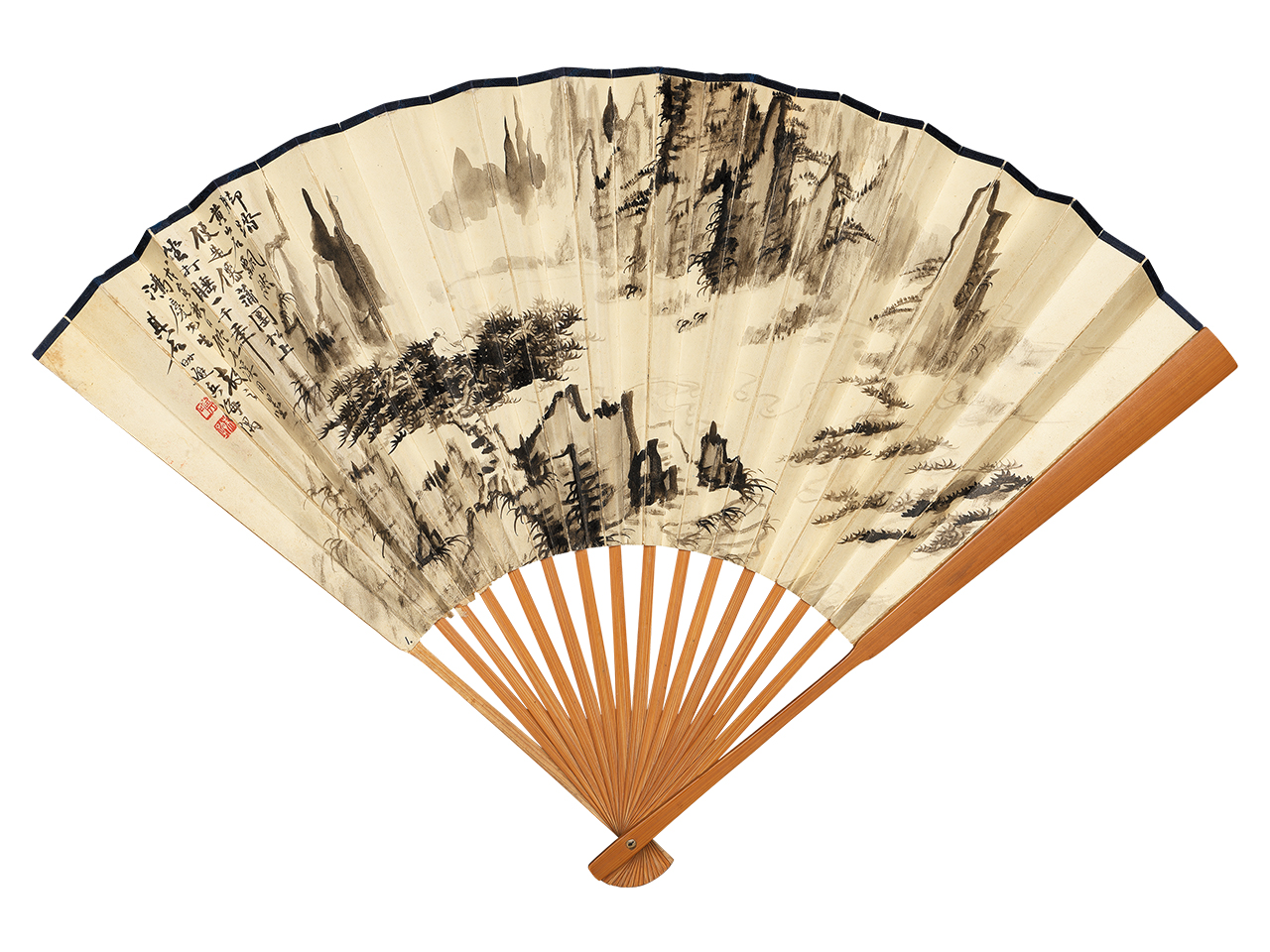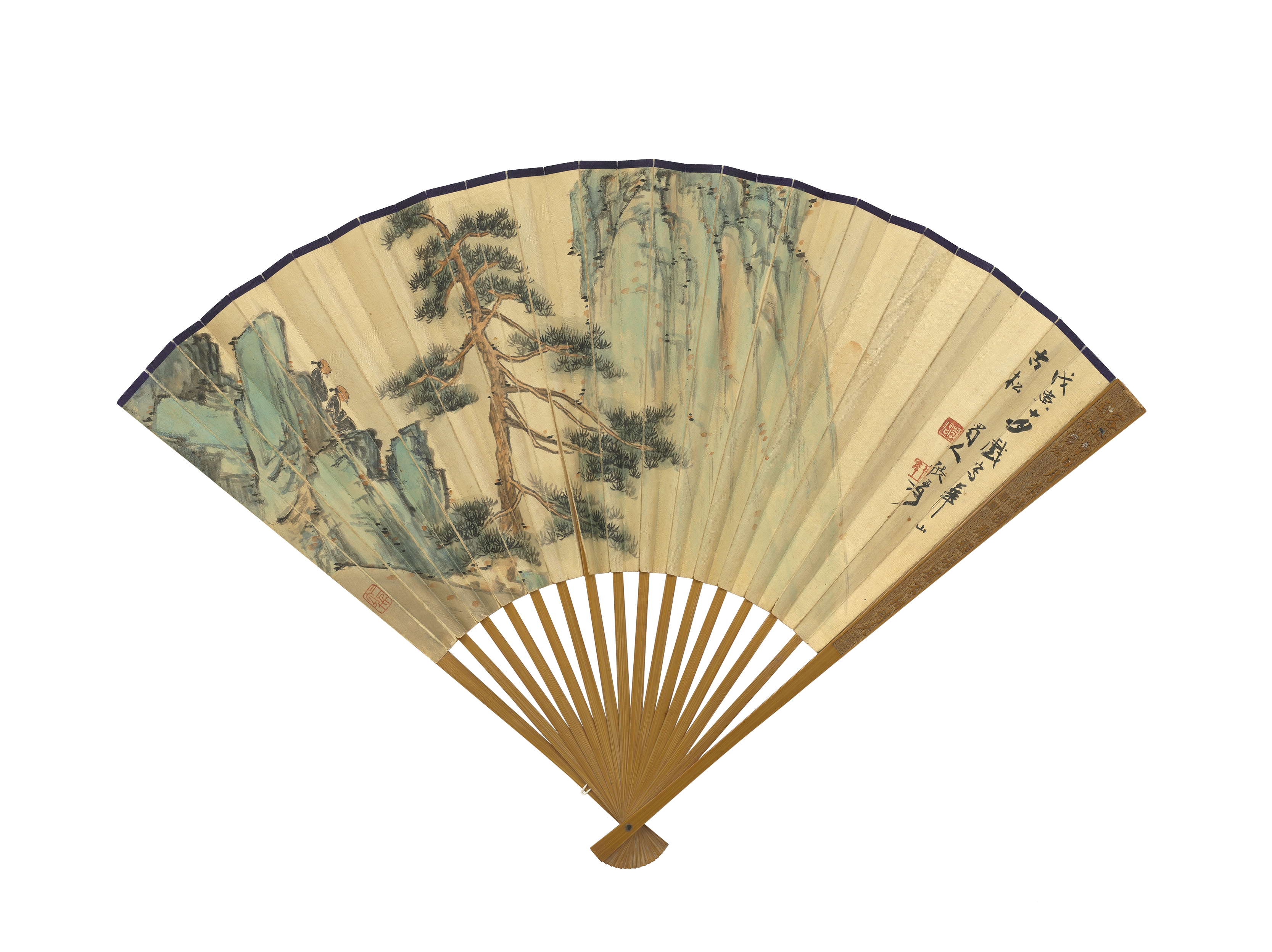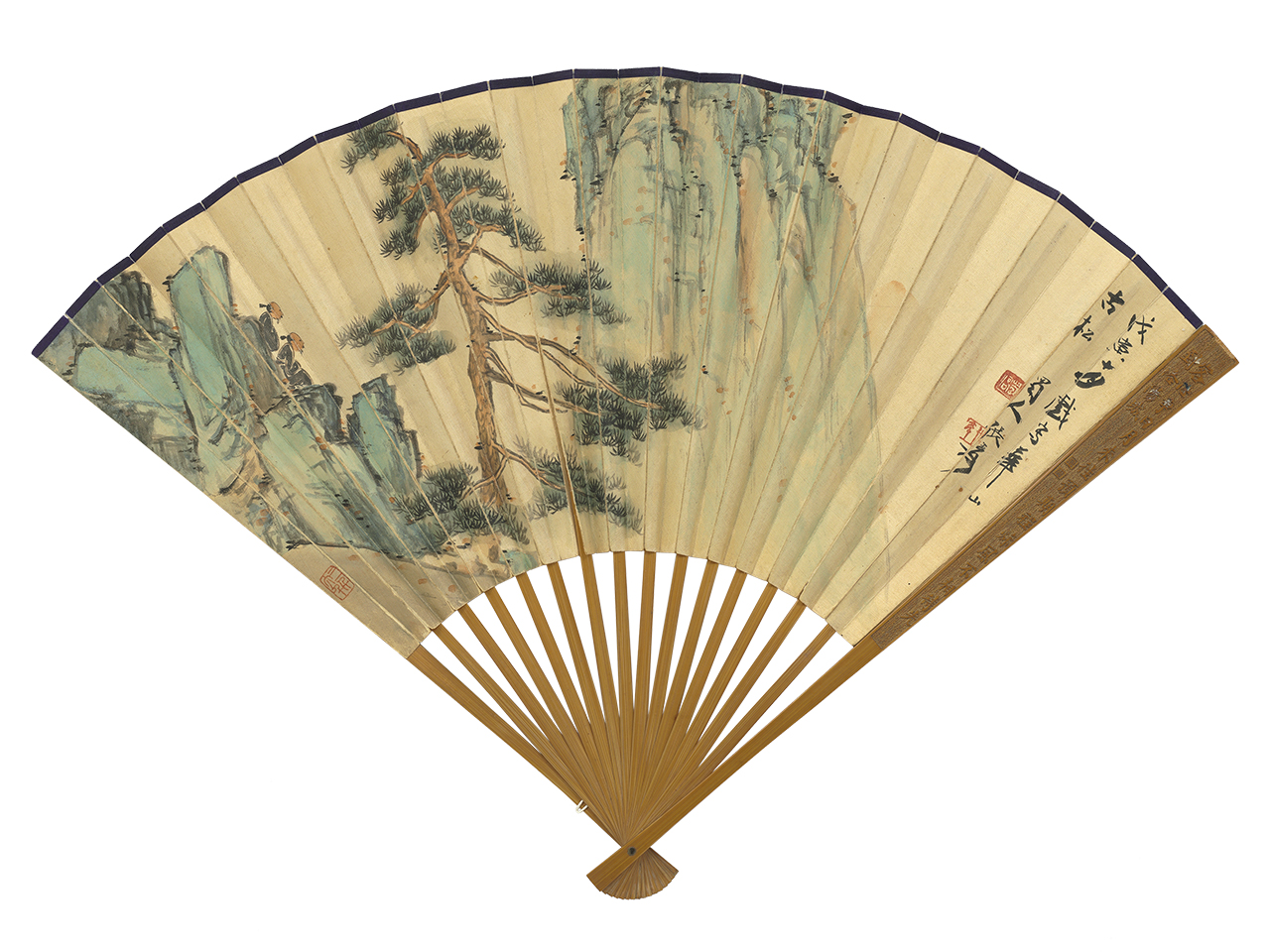Taking Hold of the Landscape
The growing popularity of site-specific painting on folding fans reflected trends of traveling to famous mountains and scenic places. Folding fans first appeared in China in the tenth century after being imported from Japan, and they gradually became a medium for painting and calligraphy in the mid-fifteenth century. The portability of this format made it suitable for concealment in one's sleeve and hence more convenient than the traditional round fan. The small size of a folding fan also meant that the price of buying this kind of painting was at least three times lower than that of a hanging scroll, making it much more affordable. After a famous artist added painting to a folding fan, the owner could show it off with a sense of pride by opening it in conversation. In the first half of the twentieth century, folding fans on famous geographic sites around China became very popular. Artists recorded in painting personal trips or those made by recipients of the paintings, the result being that these travel experiences became a kind of cultural capital to display when fans were unfolded in social situations.
-
Viewing the Clouds
- Zhu Qishi (1906-1965), Republican period
- 18 x 43.4 cm
In this painting from 1938, Zhu Qishi depicted clusters of precipitous peaks that pierce the flowing clouds. On the pine tree that rises in the foreground sits a person viewing the clouds and mountains in this scene of comfort and ease. The tree shown here is probably Putuan ("Rush Cushion") Pine, which is found on the way from Manjusri Courtyard (modern Yuping Tower) and Guangming Peak. The pine is a landmark site at Huangshan. Zhu Qishi actually once traveled throughout Huangshan and Yandang. When he did this painting, the Second Sino-Japanese War had just begun, yet the strife that would befall China seems far removed from the serene scenery shown here. This kind of subject matter signifies the painter's experience "to travel ten thousand miles," and it would have given the recipient a sense of endless yearning as well.
-
Ancient Pine at Huashan
- Chang Dai-chien (1899-1983), Republican period
- 18 x 44.8 cm
Chang Dai-chien (named Yuan) was a native of Neijiang in Sichuan and one of the most famous artists in modern China.
This painting was done in 1938 after Chang had ascended Huashan and traveled the five great peaks there in 1934 and 1935. The work employs vertical elements in the composition with the motifs placed across the space of the folding fan from left to right. At the left are various crags, where two figures are seated. Then continuing to the right is a solitary pine rising up, boldly separating the scenery from the distant mountains in the background. From bottom to top in the painting, these motifs take up a considerable portion of the composition, with the artist's inscription in the right part. This work that appears spontaneous with two figures at the left gazing at the tree and mountains seems to highlight the most important part of traveling to scenic sites, which is "viewing a spectacle."



